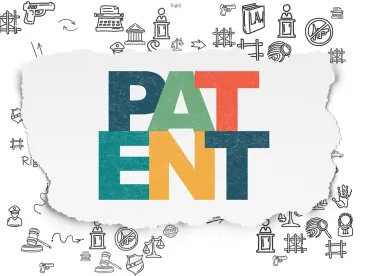Holding
In CR Bard v. Medline Indus., Nos. 20-1900, -1905, -1908, -1910 (Fed. Cir. Aug. 13, 2021) (unpublished), the Court of Appeals for the Federal Circuit (“Federal Circuit”) issued mixed decisions in the appeals of four inter partes review final written decisions: IPR2019-0035, IPR2019-00036, IPR2019-00109 and IPR2019-00223. The Federal Circuit affirmed-in-part, vacated-in-part, and remanded the cases for further proceedings.
Background
The patents at issue, U.S. Pat. 9,745,088 (“the ’088 patent”), U.S. Pat. 9,808,596 (“the ‘596 patent”), and U.S. Pat. 9,795,761 (“the ’761 patent”) are owned by Medline and relate to storage trays for catheterization tools. Bard filed petitions for inter partes review (IPR) of Medline’s patents based on different combinations of four prior art references: Solazzo, Serany, Disston, and Imai. The Patent Trial and Appeal Board (“the Board”) held that Bard failed to show the challenged claims were unpatentable for obviousness.
Regarding the ’088 patent, the Board held the challenged claims were not unpatentable for obviousness. Specifically, the Board held that Solazzo’s disclosure of two syringes did not render obvious certain claims in the ’088 patent requiring “a first syringe and a second syringe disposed within the first compartment” because Solazzo did not “’expressly describe[]’ placing two syringes together in one compartment.” Id. at *11.
Similarly, the Board held that Solazzo’s disclosure of a tray having a non-constant bottom in which lubricant is stored above an inflation syringe, in accordance with their order of use, did not render obvious other claims of the ’088 patent that required a tray with two syringes positioned at different heights according to their order of use. Nor did Imai’s teaching of arranging syringes at different heights render the claims obvious, the Board found.
Like the ’088 patent, the Board concluded that certain claims of the ’596 patent were also not unpatentable as obvious. One claim required a fluid receptacle “between the second compartment base member and the Foley catheter.” According to the Board, Serany failed to “expressly describe or illustrate a fluid receptacle that is wholly located between the bottom of the container and the catheter.” Id. at *17 (emphasis in original). Another claim required the tray’s first compartment to “receive the lubricating jelly.” The Board concluded Solazzo’s compartment would be “too deep” to “facilitate lubricant application.” Id. at *19.
The Board also found the challenged claim of the ’761 patent not unpatentable as obvious. That claim recited a “lubricating jelly application chamber to lubricate the Foley catheter[.]” The Board found that Solazzo’s compartment was “too narrow and deep” to render obvious the claim, even though Solazzo disclosed that its compartment would “’permit lubrication’ of a catheter that ‘is passing over [the]divider wall.’” Id. at *21.
The Board did not discuss the parties’ objective evidence arguments in its Final Written Decisions.
Federal Circuit Decision
With respect to the claims of the ’088 patent requiring two syringes, the Federal Circuit vacated the Board’s decision. Even without explicit disclosure of two syringes in one compartment, “it certainly was well within the possibilities available to [a skilled artisan] to do so,” the Court held. Id. at *11-12. “When two equally viable options are available, as here (the irrigation syringe could either be stored with the inflation syringe or apart), then, without more, either one would seem to have been obvious.” Id. at *12. The Federal Circuit concluded that the Board’s obviousness analysis was too rigid, and did not account for “a skilled artisan’s ‘creativity [] and common sense.’” Id.
The Federal Circuit found the same error in the Board’s “overly rigid” analysis regarding the obviousness of the ’088 patent claims requiring storing two syringes at different heights according to their order of use. The Federal Circuit held a lack of “express” disclosure “does not defeat Bard’s argument on obviousness.” Id. at *16. “Given the prior art disclosures and the finite number of predictable options, a skilled artisan would have been motivated to stack the syringes by height according to their order of use.” Id.
For the ’596 patent’s claims requiring a fluid receptacle “between the second compartment base member and the Foley catheter,” the Federal Circuit characterized the Board’s analysis as “impos[ing] anticipation-like requirements on the prior art in determining obviousness.” Id. at *18. “Sereny’s disclosure, coupled with common sense, would have provided a skilled artisan with ample motivation to place the fluid receptacle under the catheter; such an arrangement would conveniently place the items in the order they are used[.]” Id. The Federal Circuit thus vacated the Board’s decision with respect to these claims.
However, for the ’596 patent’s claims requiring the tray’s first compartment to “receive the lubricating jelly,” the Federal Circuit upheld the Board’s conclusion of nonobviousness as supported by substantial evidence. There was record evidence that Solazzo’s compartment was “not configured to store lubricant or to facilitate catheter lubrication.” Id. The Federal Circuit held, “[i]f two ’inconsistent conclusions may reasonably be drawn from the evidence in the record, [the Board’s] decision to favor one conclusion over the other is the epitome of a decision that must be sustained upon review for substantial evidence.” Id. (internal citation omitted).
Similarly, the Federal Circuit affirmed the Board’s decision with respect to the ’761 patent as supported by substantial evidence. The Court relied on expert testimony that Solazzo’s compartment depth “would render it unsuitable to store lubricant.” Id. at *22.
The Federal Circuit declined to make factual findings with respect to Medline’s objective evidence of nonobviousness for the first time on appeal. On remand, the Court held, the Board can revisit the objective evidence and “evaluate the dependent claims that it did not separately analyze in the first instance.” Id. at *23.
Takeaways
Before the Supreme Court decision in KSR Int’l Co. v. Teleflex Inc., 550 U.S. 398 (2007), the person of ordinary skill in the art (“POSITA”) was not creative:
A person of ordinary skill in the art is also presumed to be one who thinks along the line of conventional wisdom in the art and is not one who undertakes to innovate, whether by patient, and often expensive, systematic research or by extraordinary insights, it makes no difference which.
Standard Oil Co. v. American Cyanamid Co., 774 F.2d 448, 454 (Fed. Cir. 1985).
But in KSR, the Supreme Court explicitly noted that the POSITA has creativity:
A person of ordinary skill is also a person of ordinary creativity, not an automaton.
KSR, 550 U.S. at 421.
The Federal Circuit has recognized this and applied it:
In KSR, the Supreme Court criticized a rigid approach to determining obviousness based on the disclosures of individual prior-art references, with little recourse to the knowledge, creativity, and common sense that an ordinarily skilled artisan would have brought to bear when considering combinations or modifications. KSR, 550 U.S. at 415-22. Rejecting a blinkered focus on individual documents, the Court required an analysis that reads the prior art in context, taking account of “demands known to the design community,” “the background knowledge possessed by a person having ordinary skill in the art,” and “the inferences and creative steps that a person of ordinary skill in the art would employ.” Id. at 418.
Randall Mfg. v. Rea, 733 F.3d 1355, 1362 (Fed. Cir. 2013).
However, there has been remarkably little discussion in the case law about this change until this decision in Bard. In Bard, the Federal Circuit reprimanded the Board for treating the POSITA like an automaton and looking for “express” disclosures. The Court reminded the Board that the obviousness analysis is not an anticipation analysis. Practitioners making obviousness arguments may find it useful to emphasize the post-KSR standard for a POSITA, perhaps arguing that a creative POSITA would understand a certain disclosure differently or would be reasonably motivated to combine or modify the prior art.
That said, practitioners are cautioned that relying solely on “common sense” may be insufficient if it is found to be conclusory and unsupported. Case law shows that examiners, the PTAB, and the district court may similarly not rely on conclusory “common sense.” T See, e.g., In re Lee, 277 F.3d 1338, 1342 (Fed. Cir. 2002); In re Zurko, 258 F.3d 1379 (Fed. Cir. 2001) (deficiencies of references cannot be saved by appeals to “common sense” and “basic knowledge” without any evidentiary support.); Mintz v. Dietz & Watson, Inc., 679 F.3d 1372, 1377 (Fed. Cir. 2012) (“With little more than an invocation of the words “common sense” (without any record support showing that this knowledge would reside in the ordinarily skilled artisan), the district court overreached in its determination of obviousness.”); Arendi S.A.R.L. v. Apple Inc., 832 F.3d 1355 (Fed. Cir. 2016). Thus, although a POSITA is creative, there still “must be some articulated reasoning with some rational underpinning to support the legal conclusion of obviousness.” KSR, 550 U.S. at 418. This may be a point of attack for practitioners facing an obviousness rejection or argument relying on common sense.
Stacy Lewis contributed to this article.




 />i
/>i

